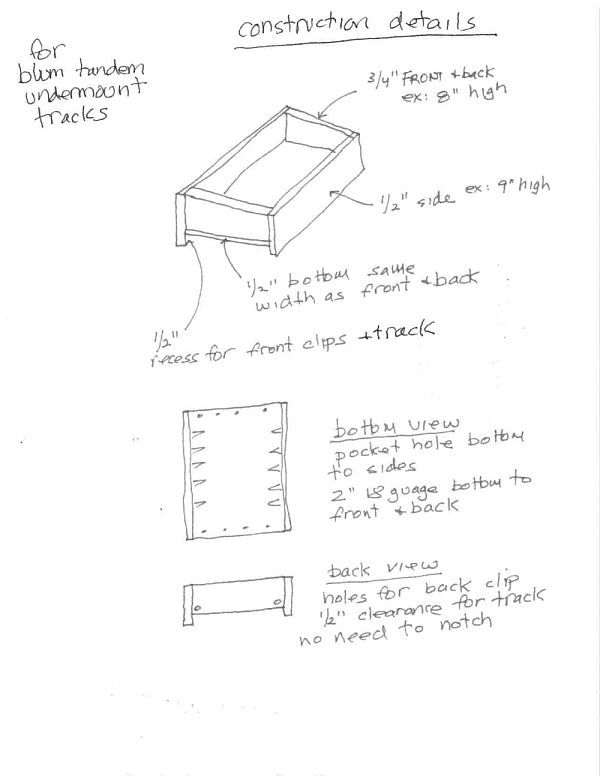Gloves in Woodshops
The consensus view is, no gloves allowed when operating machinery. October 13, 2010
Question
Is it safe to wear gloves while doing woodworking?
Forum Responses
(Cabinetmaking Forum)
From contributor S:
Nope.
From contributor J:
I guess that depends on the glove and operation. I sometimes put on nitrile gloves to help push stock through on different operations. It keeps me from slipping, so I think it's safer. They fit so tight there's not much chance of catching something.
From contributor K:
When staining or finishing, yes. Working with machinery, no. What operation would you use it for?
From contributor A:
We use a stretchy fabric glove that is rubber coated on the palm side on the jointer. I find it helps reduce the wear and tear on the skin and because they are a bit sticky, you don't have to grip the wood as hard. This takes pressure off of the finger joints which ache after a while.
From contributor L:
No gloves around machinery!
From contributor B:
I never wear gloves while using machinery - the tight fitting grip gloves are probably okay, but I would rather pick splinters out of fingers that are still attached to my hand.
From contributor O:
The tight fitting gloves with rubbery palm have made their way into our shop. I haven't seen anyone wear them working on machinery, but if I do I will put an end to it! Great for handling material, loading trucks, unloading CNC, etc., but never on the saws!
From contributor N:
The last glove I wore in the shop is a shredded, mangled mess that hangs right above my jointer. It looks better than my finger that went in with it. I'm sure you can all imagine that the jointer does not leave a clean wound. Unless you are finishing, gloves don't belong in the shop, period.
From contributor M:
Depends on the procedure. As a rule, no gloves around machinery. But some material is slippery or hard to grip. When choosing between my bare fingers slipping and sliding on material that is being shaped and sawn, or using something to improve my grip, I will wear the nitrile coated, tight fitting gloves. That said, whenever possible, whether wearing gloves or not, I try to set my fence, hold downs, feather boards or whatever so that if and when my hand does go where it is not supposed to, I won't hit the cutter. Safety is all about stacking the odds in my favor. One rule I see violated often is approaching a situation not only to avoid danger, but to minimize the damage if something happens. For instance, I have seen guys rip boards with the blade an inch or more above the surface, enough to severe a hand. When I rip, I keep the blade within 1/8 of the top. If I do happen to cut my hand, I would rather have an 1/8" wound versus a 1" cut.
From contributor X:
If I were cross cutting 1" x 12" x 16' pine lumber for shelving, using either a radial arm saw or a swing saw for the cross cutting, I'd wear gloves. If I were running a gang rip saw and was cutting (ripping) the same material, I'd wear gloves. Handling the raw lumber would be my exception, otherwise it would be a no/no. More caution would be taken when the pieces get smaller. Common sense rules. Never around plywood.
From contributor Q:
I'm not sure how many of you have worked with ipe, wenge, or a couple of other woods that leave nasty splinters that go 1/2" deep into the skin and fester immediately. That said, I still wouldn't use gloves near a table saw or jointer. Running wood through a planer (where my hands don't get within 18" of the cutterhead) or a sliding compound miter saw for larger cuts (i.e. hands at least 12" away) strikes me as a reasonable compromise.
From contributor G:
I too have a ragged glove with a rubbery palm nailed to the wall above my jointer. Yes, I was being an idiot, and have two big scars to remind me of it. Thankfully I didn't lose a finger. I also believe the gloves were a contributing factor. The knives caught the tip of a finger and sucked my hand in. A way better solution to trying to push smooth, dressed lumber through the jointer is to toss the rubbery push blocks, toss the gloves, and make a pair of push blocks with screws just barely peeking through the bottom, and plan to flip the stock once in the thickness planer to remove the divots.
From contributor I:
No gloves when operating machinery. Most dangerous on the powered infeed end where you can be pulled into the blades or cutters if a sliver hangs on the glove.
From contributor C:
I find that those dotted uni-handed gloves give me a non-slip grip when pushing wood through the saw. That's a safety feature.
From contributor V:
I'll cap off the discussion by saying there is no safe time to wear gloves around powered cutting tools. Especially power fed equipment. Grip is increased by spitting on your hands and then pushing wood. Primitive, but a standard of working people the planet over. Get over it. The best prevention for splinters is tough skin - that means handling lots of wood. I work with people that weed thistles bare-handed with no problem.
